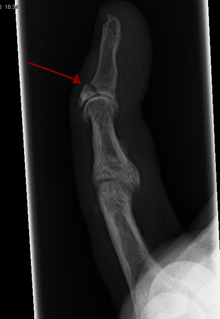Types of Avulsion Fractures
- Dental avulsion is a traumatic displacement of a tooth from its socket.
- Tuberosity avulsion of the 5th metatarsal is a fracture of the bone on the outside edge of the foot.
- Tibial tuberosity avulsion is a separation of the tibial tuberosity from the tibia.
- Mallet finger and Segond fracture are related types of avulsion fractures.
Dental Avulsion
- Dental avulsion is a serious dental emergency.
- Prompt management within 20-40 minutes affects the prognosis of the tooth.
- Treatment may involve rest, support bandage, and ice to relieve swelling.
- Displaced avulsion fractures may require surgery for fixation.
Tuberosity Avulsion of the 5th Metatarsal
- Tuberosity avulsion fracture is common in the fifth metatarsal bone.
- It is likely caused by the lateral band of the plantar aponeurosis.
- Most fractures are treated with a hard-soled shoe or walking cast.
- Healing usually takes about eight weeks.
- Proximal fractures of the fifth metatarsal are also known as pseudo-Jones fracture or dancer's fracture.
Tibial Tuberosity Avulsion
- Tibial tuberosity avulsion occurs due to a violent contraction of the quadriceps muscles.
- Incomplete fractures can be treated with the RICE method.
- Complete or displaced fractures often require surgery to pin the tuberosity back in place.
- Teenagers engaged in sports activities are more prone to this type of avulsion fracture.
- Osgood-Schlatters disease is linked to tibial tuberosity avulsions.
Avulsion Fractures in Other Animals
- Avulsion injuries were noted among Tyrannosaurus and Allosaurus dinosaurs.
- Scars from avulsion injuries were limited to the humerus and scapula.
- Theropod dinosaurs may have had a more complex musculature compared to birds.
- Avulsion fractures in dinosaurs suggest different functional characteristics of their muscles.
- Avulsion fractures in other animals provide insights into their activity patterns.
An avulsion fracture is a bone fracture which occurs when a fragment of bone tears away from the main mass of bone as a result of physical trauma. This can occur at the ligament by the application of forces external to the body (such as a fall or pull) or at the tendon by a muscular contraction that is stronger than the forces holding the bone together. Generally muscular avulsion is prevented by the neurological limitations placed on muscle contractions. Highly trained athletes can overcome this neurological inhibition of strength and produce a much greater force output capable of breaking or avulsing a bone.
| Avulsion fracture | |
|---|---|
 | |
| Avulsion fracture of a fingertip bone | |
 | |
| Avulsion fracture of the proximal middle phalanx on the palm side | |
| Specialty | Orthopedic |